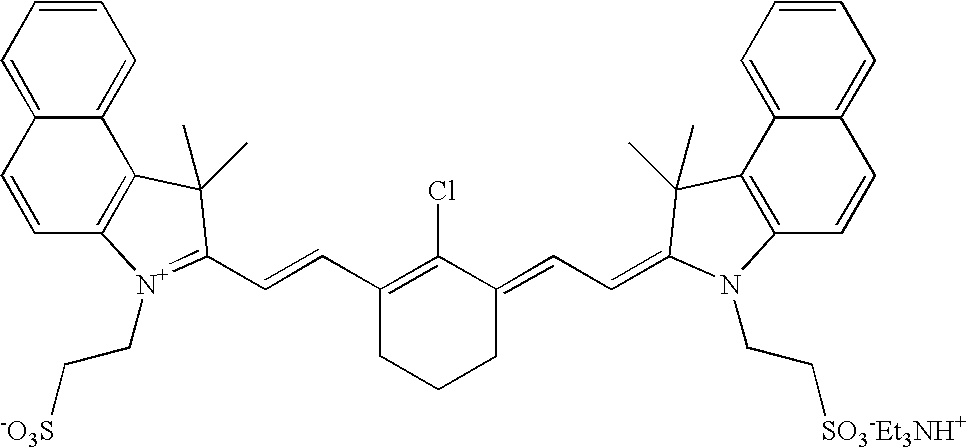Method for making a lithographic printing plate
a printing plate and lithographic technology, applied in the field of making lithographic printing plates, can solve the problems of reducing the tendency of ink acceptance, removing the non, and toning the press, and achieve the effects of excellent printing properties, reduced or no toning, and high sensitivity
- Summary
- Abstract
- Description
- Claims
- Application Information
AI Technical Summary
Benefits of technology
Problems solved by technology
Method used
Image
Examples
example 1
Printing Plate Precursors PPP-1 to 6
Preparation of the Coating Solutions
[0112]The coating solutions for the printing plate precursors 1 to 6 were prepared using the solutions or dispersions as described above. The latex dispersions (LX) were added to demineralized water followed by stirring for 10 minutes and addition of the IR-dye. After 60 minutes of stirring, the poly acrylic acid (PAA) solution was added followed by stirring for 10 minutes and addition of the HEDP solution. Subsequently after another 10 minutes of stirring, the surfactant solution was added and the coating dispersion was stirred for another 30 minutes. Subsequently, the pH was adjusted to a value of 3.6 with a diluted ammonia solution (ca 3%).
Preparation of the Printing Plate Precursors PPP-1 to PPP-6
[0113]The printing plate precursor coating solutions were subsequently coated on the aluminum substrate, as described above, with a coating knife at a wet thickness of 30 μm. The coatings were dried at 60° C. Table ...
PUM
| Property | Measurement | Unit |
|---|---|---|
| particle diameter | aaaaa | aaaaa |
| particle diameter | aaaaa | aaaaa |
| particle diameter | aaaaa | aaaaa |
Abstract
Description
Claims
Application Information
 Login to View More
Login to View More - R&D
- Intellectual Property
- Life Sciences
- Materials
- Tech Scout
- Unparalleled Data Quality
- Higher Quality Content
- 60% Fewer Hallucinations
Browse by: Latest US Patents, China's latest patents, Technical Efficacy Thesaurus, Application Domain, Technology Topic, Popular Technical Reports.
© 2025 PatSnap. All rights reserved.Legal|Privacy policy|Modern Slavery Act Transparency Statement|Sitemap|About US| Contact US: help@patsnap.com



